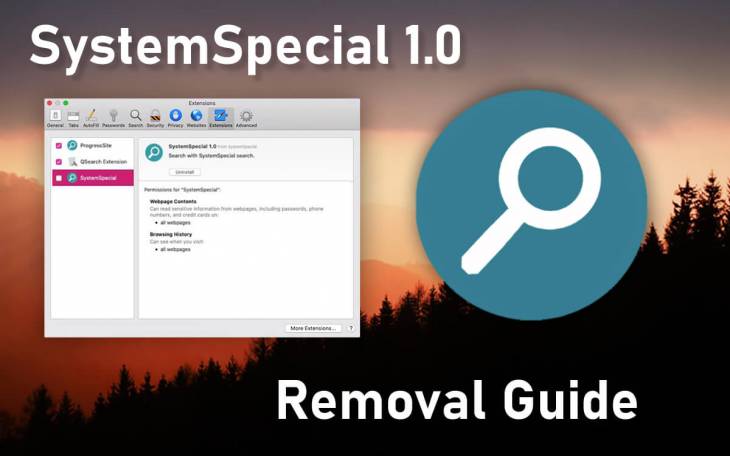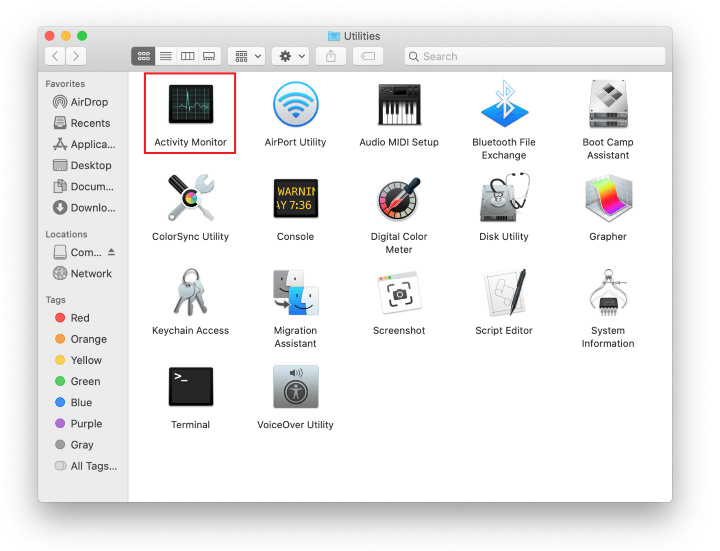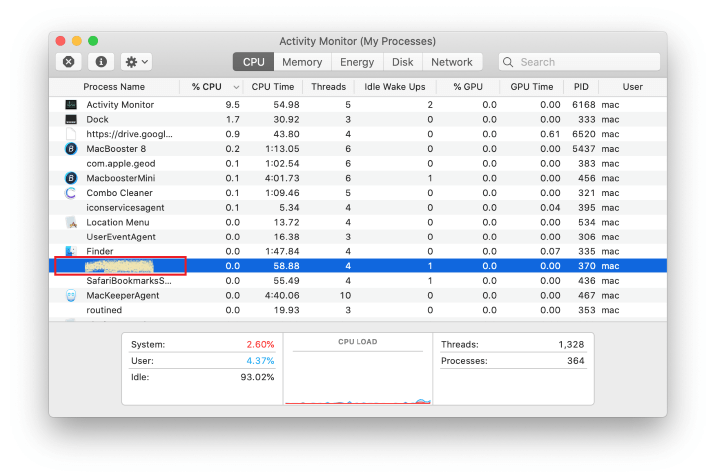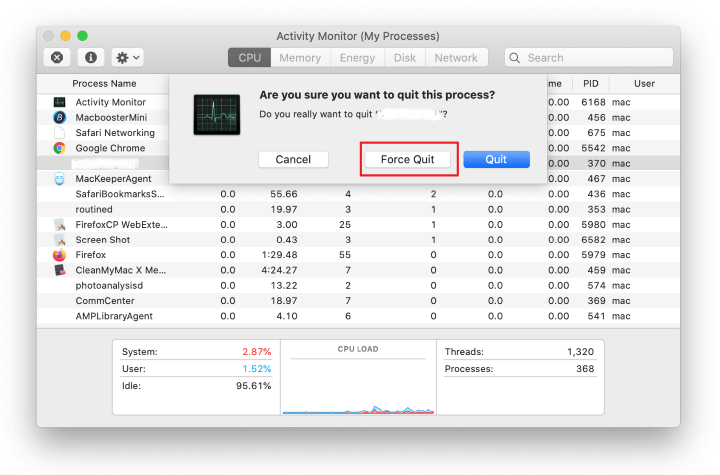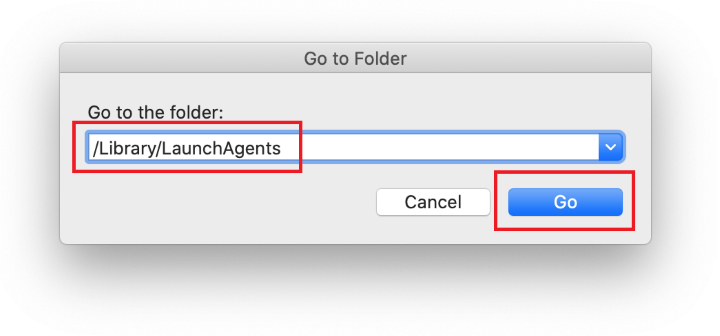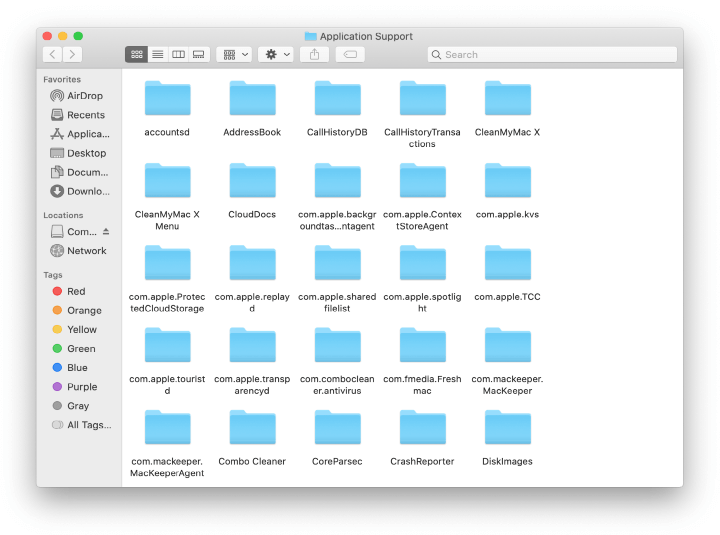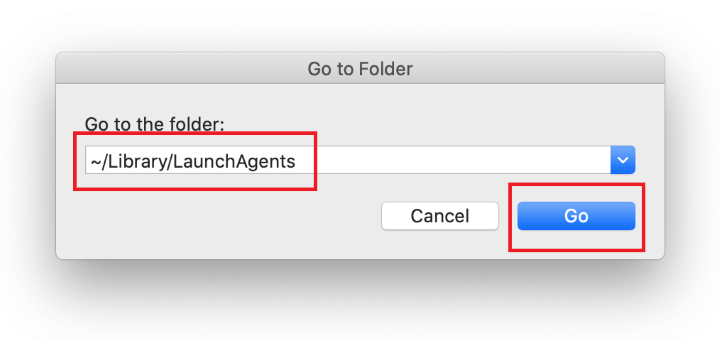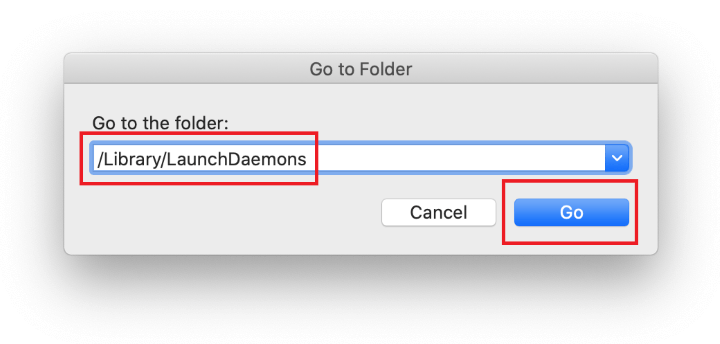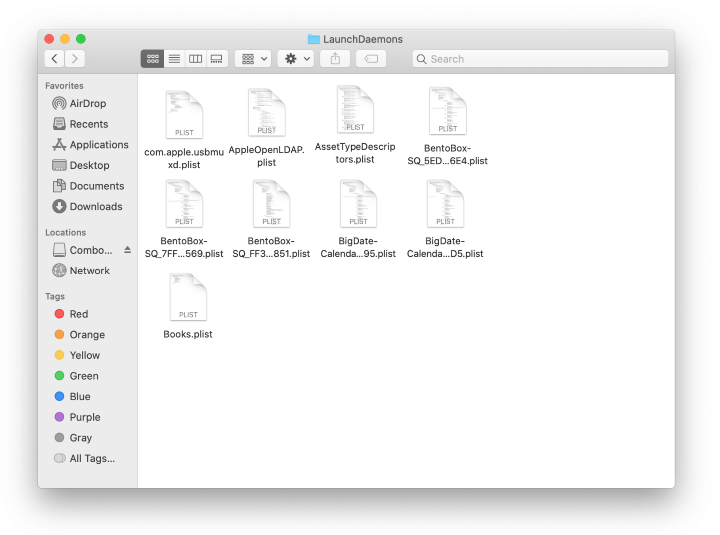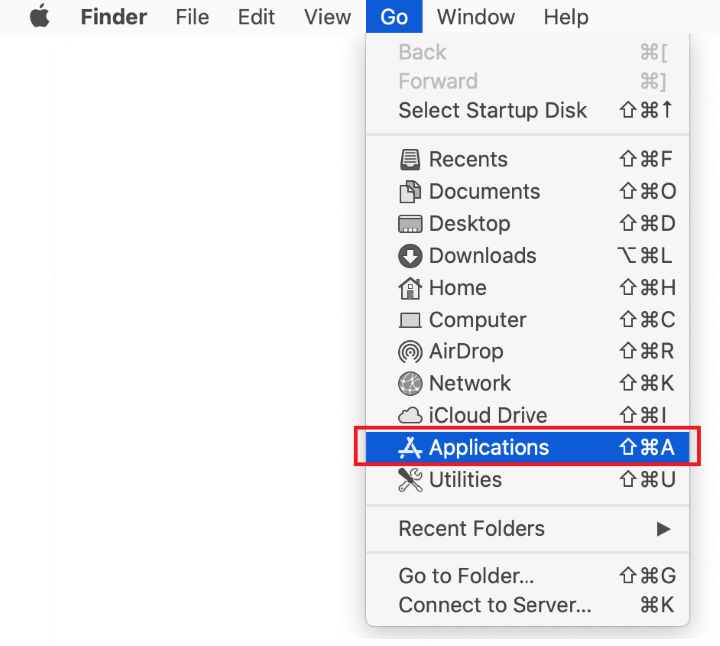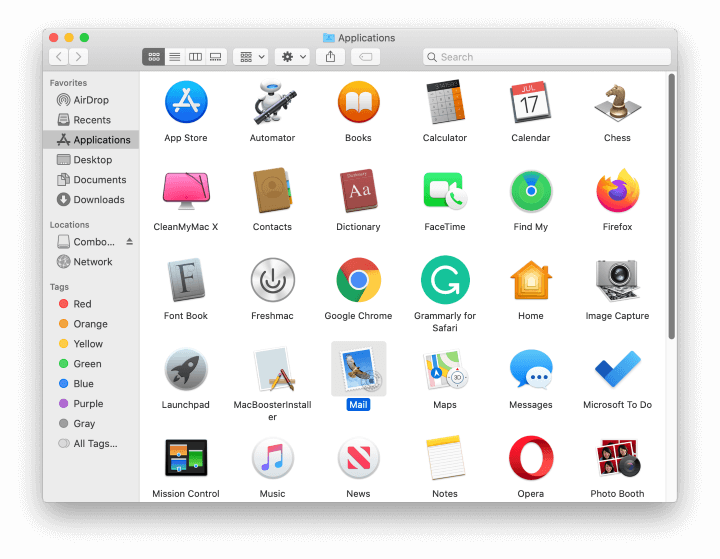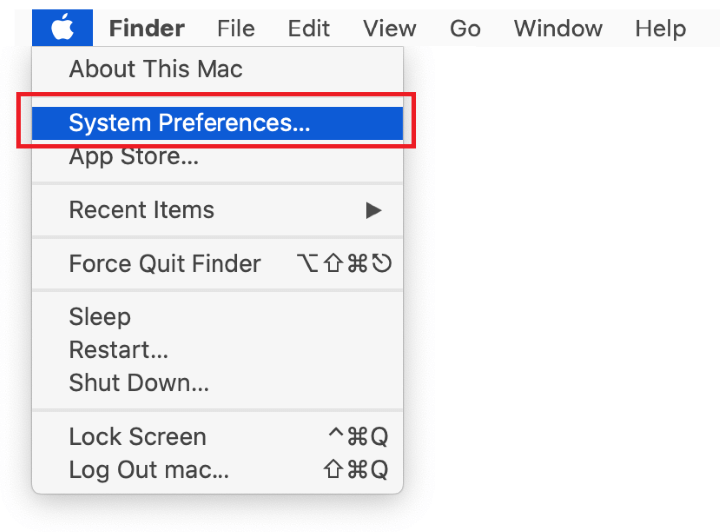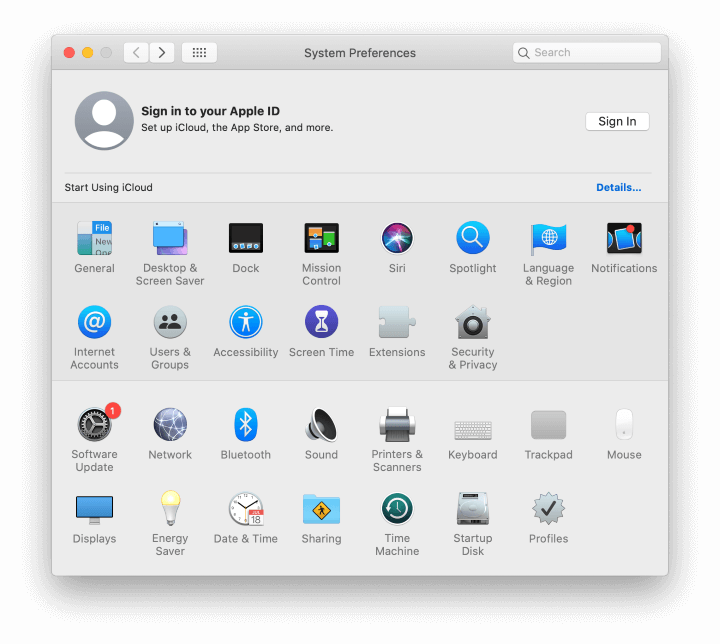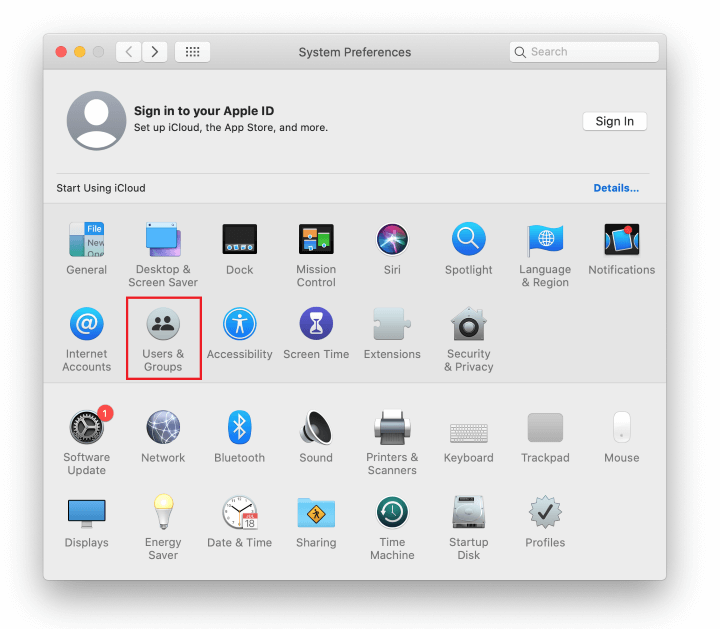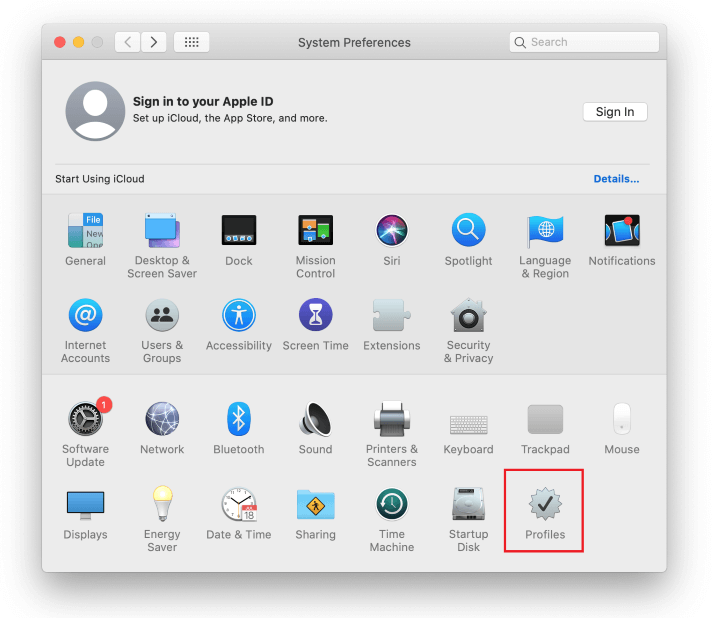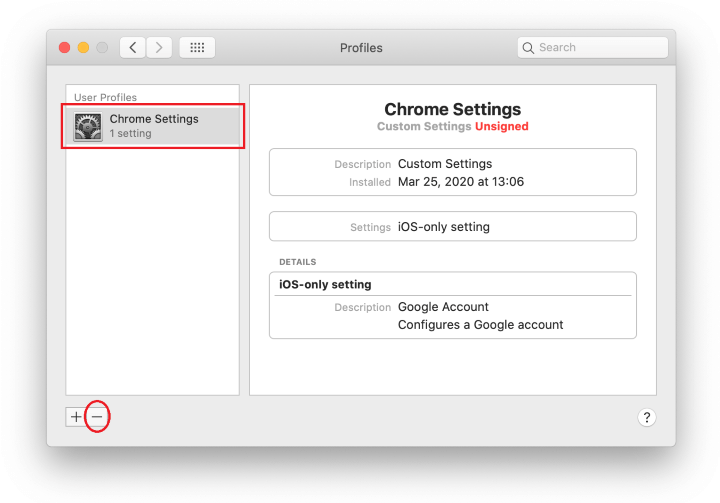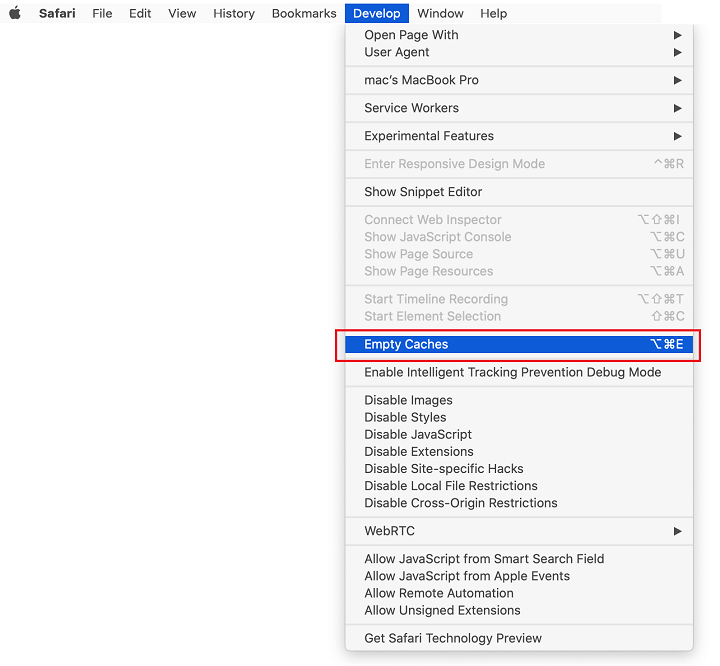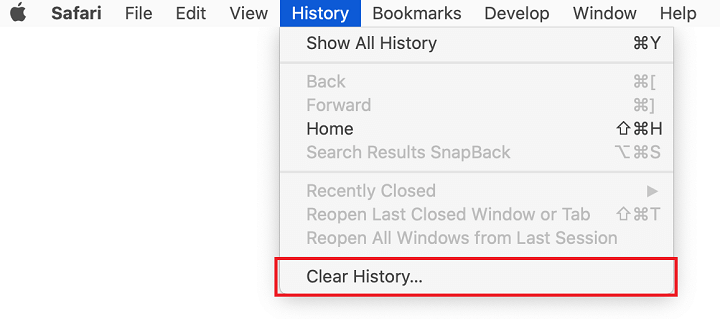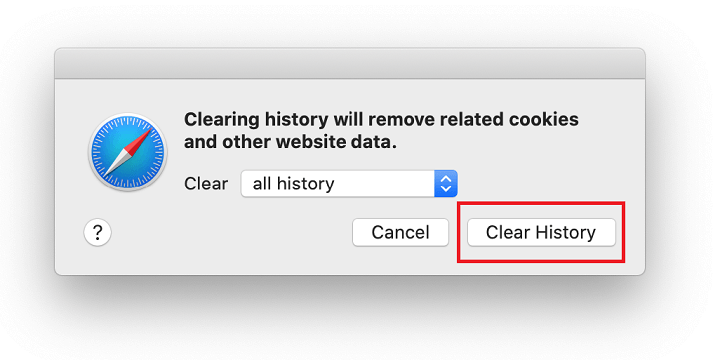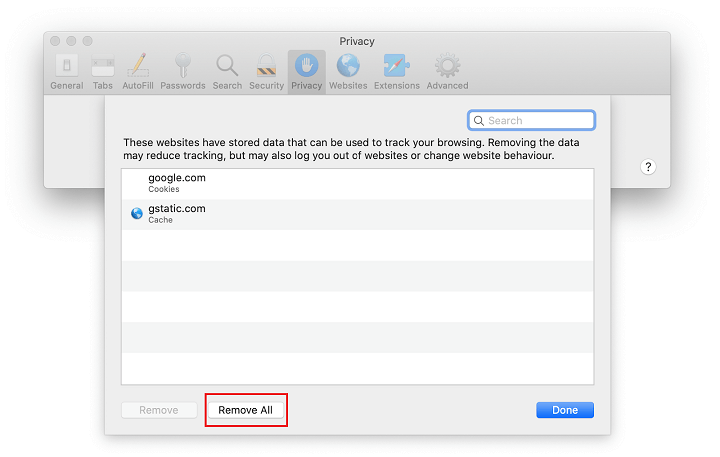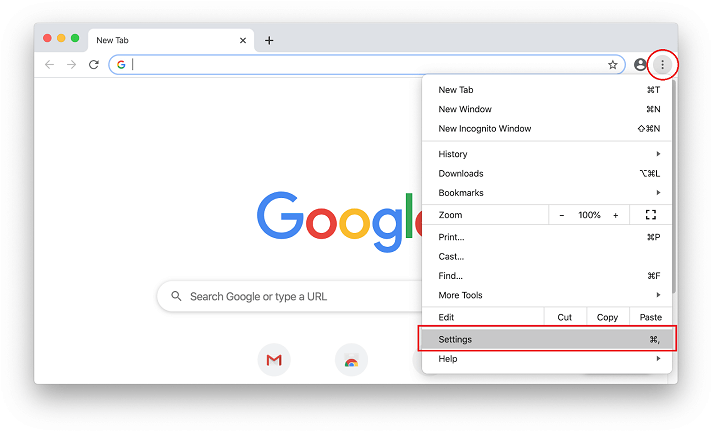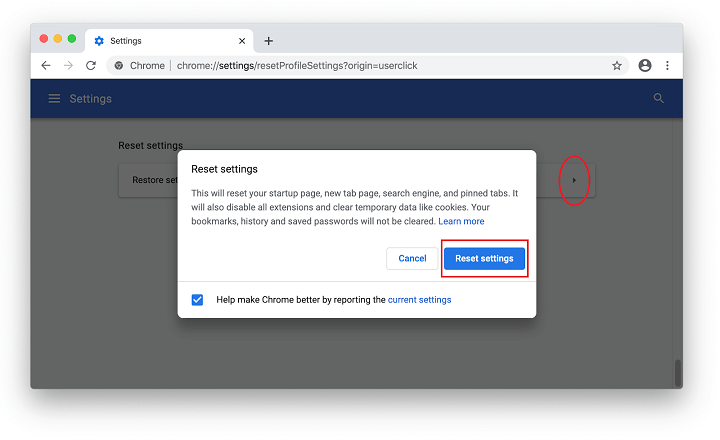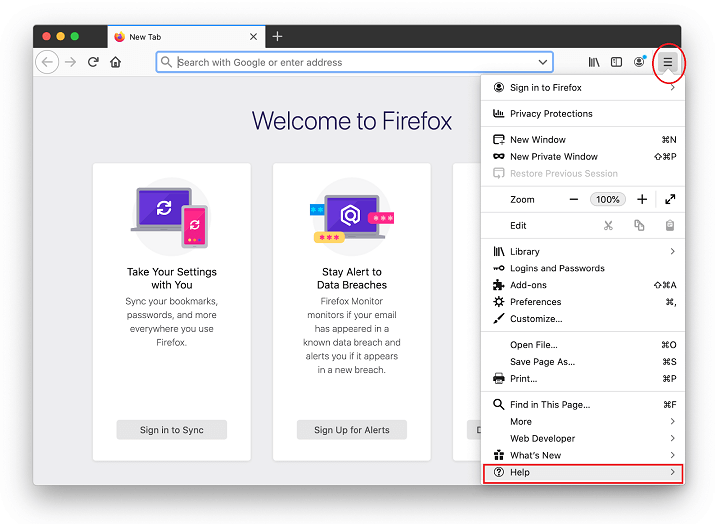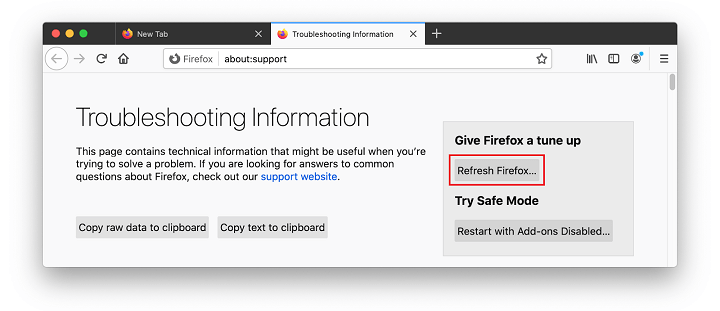This article provides a summary of the annoying Mac threat called SystemSpecial and includes effective techniques to remove it from an infected system.
Few species of malicious code are as obnoxious as adware. While the damage stemming from its activity is estimated as mild to moderate, the victims are stuck in a quandary where normal web surfing seems to be a thing of the past. The Mac application called SystemSpecial is just like that. It gains a foothold inside a computer silently and instantly overrides the admin’s browsing preferences to push associated junk services such as Safe Finder, a notorious fake search enhancement that hijacks and reorganizes the Internet traffic to earn its authors filthy revenue.
SystemSpecial isn’t a one-of-a-kind Mac virus as it goes in lockstep with numerous predecessors that have a ton of things in common. Several examples are SystemSpot, ProgressSite, FormList, ManagerPages, and ForBrowser. The shared features include, occasionally with a few differences, the app icon design, affiliation with the same browser redirect hoax, and the program versioning pattern exemplified by SystemSpecial 1.0 name the victims discover in some system paths.
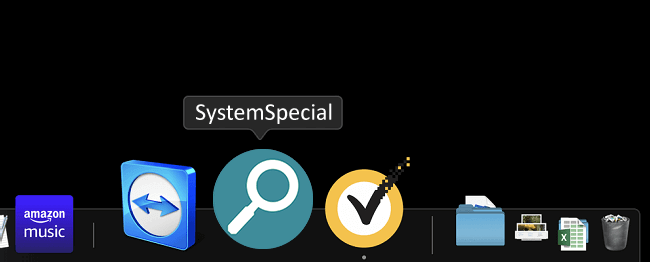
Having cropped up on a Mac computer, the perpetrating app takes a well-trodden route that starts with poisoning the user’s default web browser. The most prominent sign of this tampering is a new item added to the list of the installed extensions. It’s called SystemSpecial 1.0, reflecting the above-mentioned naming hallmark that makes this adware family stand out from the rest. The disconcerting thing is that this add-on automatically obtains elevated permissions in the polluted browser. It can retrieve sensitive data from web pages, including credit card details and passwords, and it can additionally read the browsing history. As a rule, such a broad spectrum of privileges is a matter of the administrator granting it in a transparent way. However, SystemSpecial virus skips the regular authorization stage altogether.
Aside from the mind-boggling access to the victim’s confidential information, another adverse effect triggered by the sketchy browser extension is that it modifies browsing settings in a snap. Whether the user is a fan of Safari, Google Chrome or Mozilla Firefox, the preferences that undergo this malicious tweaking span the homepage, new tab, and default search provider. These values are replaced with a variant of a.akamaihd.net URL, which is known to bolster a large-scale traffic monetization e-crime model. This address, though, is only an interstitial link in an overarching redirect fraud leading to Yahoo Hosted Search (YHS) service that features Safe Finder, the dubious brand referenced in one of the paragraphs above.
As if this multi-pronged hijack weren’t enough, SystemSpecial also displays sponsored materials where they don’t belong. The web pages visited by the victim get inundated with third-party ads that further diminish the browsing experience. Popups, transitional advertisements, and in-text links suddenly appear all over sites that normally don’t contain any such content. At the end of the day, the consequences of the SystemSpecial attack become intolerable and the victims begin looking for a fix. This could be problematic because the adware under scrutiny spawns and obfuscates a bevy of its components across the Mac to hamper regular remediation. The good news is, the cleanup is feasible as long as it’s done according to a tried-and-tested adware removal procedure.
SystemSpecial virus manual removal for Mac
The steps listed below will walk you through the removal of this malicious application. Be sure to follow the instructions in the specified order.
- Expand the Go menu in your Mac’s Finder bar and select Utilities as shown below.

- Locate the Activity Monitor icon on the Utilities screen and double-click on it.

- In the Activity Monitor app, look for a process that appears suspicious. To narrow down your search, focus on unfamiliar resource-intensive entries on the list. Keep in mind that its name isn’t necessarily related to the way the threat is manifesting itself, so you’ll need to trust your own judgement. If you pinpoint the culprit, select it and click on the Stop icon in the upper left-hand corner of the screen.

- When a follow-up dialog pops up asking if you are sure you want to quit the troublemaking process, select the Force Quit option.

- Click on the Go menu icon in the Finder again and select Go to Folder. You can as well use the Command-Shift-G keyboard shortcut.

- Type /Library/LaunchAgents in the folder search dialog and click on the Go button.

- Examine the contents of the LaunchAgents folder for dubious-looking items. Be advised that the names of files spawned by malware may give no clear clues that they are malicious, so you should look for recently added entities that appear to deviate from the norm.
As an illustration, here are several examples of LaunchAgents related to mainstream Mac infections: com.pcv.hlpramc.plist, com.updater.mcy.plist, com.avickUpd.plist, and com.msp.agent.plist. If you spot files that don’t belong on the list, go ahead and drag them to the Trash.

- Use the Go to Folder lookup feature again to navigate to the folder named ~/Library/Application Support (note the tilde symbol prepended to the path).

- When the Application Support directory is opened, identify recently generated suspicious folders in it and send them to the Trash. A quick tip is to look for items whose names have nothing to do with Apple products or apps you knowingly installed. A few examples of known-malicious folder names are IdeaShared, ForwardOpen and ExtraBrowser.

- Enter ~/Library/LaunchAgents string (don’t forget to include the tilde character) in the Go to Folder search area.

- The system will display LaunchAgents residing in the current user’s Home directory. Look for dodgy items related to SystemSpecial virus (see logic highlighted in subsections above) and drag the suspects to the Trash.

- Type /Library/LaunchDaemons in the Go to Folder search field.

- In the LaunchDaemons path, try to pinpoint the files the malware is using for persistence. Several examples of such items cropped by Mac infections are com.pplauncher.plist, com.startup.plist, and com.ExpertModuleSearchDaemon.plist. Delete the sketchy files immediately.

- Click on the Go menu icon in your Mac’s Finder and select Applications on the list.

- Find the entry for an app that clearly doesn’t belong there and move it to the Trash. If this action requires your admin password for confirmation, go ahead and enter it.

- Expand the Apple menu and select System Preferences.


- Proceed to Users & Groups and click on the Login Items tab.
The system will display the list of items launched when the computer is starting up. Locate the potentially unwanted app there and click on the “-” (minus) button.

- Now select Profiles under System Preferences. Look for a malicious item in the left-hand sidebar. Several examples of configuration profiles created by Mac adware include TechSignalSearch, MainSearchPlatform, AdminPrefs, and Chrome Settings. Select the offending entity and click on the minus sign at the bottom to eliminate it.

If your Mac has been infiltrated by adware, the infection will most likely continue to hold sway over your default web browser even after you remove the underlying application along with its components sprinkled around the system. Use the browser cleanup instructions below to address the remaining consequences of this attack.
Get rid of SystemSpecial virus in web browser on Mac
To begin with, the web browser settings taken over by the SystemSpecial virus should be restored to their default values. Although this will clear most of your customizations, web surfing history, and all temporary data stored by websites, the malicious interference should be terminated likewise. The overview of the steps for completing this procedure is as follows:
- Remove SystemSpecial virus from Safari
- Open the browser and go to Safari menu. Select Preferences in the drop-down list.

- Once the Preferences screen appears, click on the Advanced tab and enable the option saying “Show Develop menu in menu bar”.

- Now that the Develop entry has been added to the Safari menu, expand it and click on Empty Caches.

- Now select History in the Safari menu and click on Clear History in the drop-down list.

- Safari will display a dialog asking you to specify the period of time this action will apply to. Select all history to ensure a maximum effect. Click on the Clear History button to confirm and exit.

- Go back to the Safari Preferences and hit the Privacy tab at the top. Find the option that says Manage Website Data and click on it.

- The browser will display a follow-up screen listing the websites that have stored data about your Internet activities. This dialog additionally includes a brief description of what the removal does: you may be logged out of some services and encounter other changes of website behavior after the procedure. If you’re okay with that, go ahead and click on the Remove All button.

- Restart Safari
- Open the browser and go to Safari menu. Select Preferences in the drop-down list.
- Remove SystemSpecial in Google Chrome
- Open Chrome, click the Customize and control Google Chrome (⁝) icon in the top right-hand part of the window, and select Settings in the drop-down

- When on the Settings pane, select Advanced
- Scroll down to the Reset settings section.

- Confirm the Chrome reset on a dialog that will pop up. When the procedure is completed, relaunch the browser and check it for malware activity.

- Open Chrome, click the Customize and control Google Chrome (⁝) icon in the top right-hand part of the window, and select Settings in the drop-down
- Remove SystemSpecial from Mozilla Firefox
- Open Firefox and go to Help – Troubleshooting Information (or type about:support in the URL bar and press Enter).


- When on the Troubleshooting Information screen, click on the Refresh Firefox button.

- Confirm the intended changes and restart Firefox.
- Open Firefox and go to Help – Troubleshooting Information (or type about:support in the URL bar and press Enter).
Get rid of SystemSpecial ads and redirect activity in web browser on Mac
The Mac maintenance and security app called Combo Cleaner is a one-stop tool to detect and remove SystemSpecial virus. This technique has substantial benefits over manual cleanup, because the utility gets hourly virus definition updates and can accurately spot even the newest Mac infections.
Furthermore, the automatic solution will find the core files of the malware deep down the system structure, which might otherwise be a challenge to locate. Here’s a walkthrough to sort out the SystemSpecial issue using Combo Cleaner:
- Download Combo Cleaner installer. When done, double-click the combocleaner.dmg file and follow the prompts to install the tool onto your Mac.
By downloading any applications recommended on this website you agree to our Terms and Conditions and Privacy Policy. The free scanner checks whether your Mac is infected. To get rid of malware, you need to purchase the Premium version of Combo Cleaner.
- Open the app from your Launchpad and let it run an update of the malware signature database to make sure it can identify the latest threats.
- Click the Start Combo Scan button to check your Mac for malicious activity as well as performance issues.

- Examine the scan results. If the report says “No Threats”, then you are on the right track with the manual cleaning and can safely proceed to tidy up the web browser that may continue to act up due to the after-effects of the malware attack (see instructions above).

- In case Combo Cleaner has detected malicious code, click the Remove Selected Items button and have the utility remove SystemSpecial threat along with any other viruses, PUPs (potentially unwanted programs), or junk files that don’t belong on your Mac.

- Once you have made doubly sure that the malicious app is uninstalled, the browser-level troubleshooting might still be on your to-do list. If your preferred browser is affected, resort to the previous section of this tutorial to revert to hassle-free web surfing.
